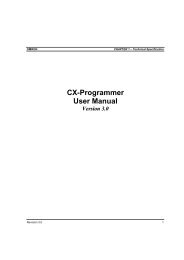

- #Convertir de hexadecimal a float cx programmer update
- #Convertir de hexadecimal a float cx programmer full
This is effectively identical to the values above, with a factor of two shifted between exponent and mantissa. Note: The converter used to show denormalized exponents as 2 -127 and a denormalized mantissa range [0:2). The exponent value is set to 2 -126 and the "invisible" leading bit for the mantissa is no longer used. If the exponent has minimum value (all zero), special rules for denormalized values are followed. If the exponent reaches -127 (binary 00000000), the leading 1 is no longer used to enable gradual underflow. it is not actually stored) with value 1.0 is placed in front, then bit 23 has a value of 1/2, bit 22 has value 1/4 etc.

The mantissa (also known as significand or fraction) is stored in bits 1-23.Īn invisible leading bit (i.e. The exponent can be computed from bits 24-31 by subtracting 127. The value of a IEEE-754 number is computed as: Please note there are two kinds of zero: +0 and -0. You can enter the words "Infinity", "-Infinity" or "NaN" to get the corresponding special values for IEEE-754. To make it easier to spot eventual rounding errors, the selected float number is displayed after conversion to double precision.
#Convertir de hexadecimal a float cx programmer update
Or you can enter a binary number, a hexnumber or the decimal representation into the corresponding textfield and press return to update You can either convert a number by choosing its binary representation in the button-bar, the other fields will be updated immediately. IEEE-754-Standard contains formats with increased precision. The conversion is limited to 32-bit single precision numbers, while the

There can be surprising differences in what numbers can be represented easily in decimal and which numbers can be represented in IEEE-754. This is the format in which almost all CPUs represent non-integer numbers. This webpage is a tool to understand IEEE-754 floating point numbers. So you can easier tell the difference between what you entered and what you get in IEEE-754. The difference between both values is shown as well, Entering "0.1" is - as always - a nice example to see this behaviour.
#Convertir de hexadecimal a float cx programmer full
Well as the actual full precision decimal number that the float value is representing. Now the original number is shown (either as the number that was entered, or as a possibly rounded decimal string) as Previous version would give you the represented value as a possibly rounded decimal number and the same number with the increased precision There has been an update in the way the number is displayed.


 0 kommentar(er)
0 kommentar(er)
